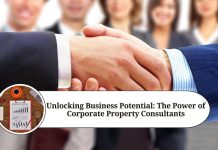INTRODUCTION
Capital gearing, also known as financial leverage, is a term used to describe the ratio of a company’s debt to its equity. It is a financial metric that is used to determine the amount of debt that a company is using to fund its operations and growth, as well as the risks associated with that level of debt. Understanding capital gearing is important for investors, as it can provide insights into a company’s financial health and its ability to repay its debts.
In simple terms, capital gearing measures the proportion of a company’s funding that comes from debt compared to equity. A company with high capital gearing has a higher proportion of debt than equity, while a company with low capital gearing has a higher proportion of equity than debt. The level of capital gearing can be influenced by a range of factors, including the company’s business model, industry, and financing strategy.
There are several advantages to using debt financing to fund a company’s operations and growth. Debt financing can provide access to capital that might not otherwise be available, allowing companies to pursue growth opportunities or make strategic investments. It can also offer tax benefits, as interest payments on debt are tax-deductible, reducing the overall tax burden on the company.
However, there are also risks associated with high levels of debt. If a company is unable to repay its debts, it may be forced into bankruptcy or default, which can have serious consequences for investors. Additionally, high levels of debt can make a company more vulnerable to economic downturns or changes in interest rates, as it may be harder to service its debts during periods of financial stress.
Investors can use a variety of metrics to assess a company’s capital gearing and overall financial health. One commonly used metric is the debt-to-equity ratio, which compares a company’s total debt to its total equity. Another useful metric is the interest coverage ratio, which measures a company’s ability to pay interest on its debts from its operating income.
Ultimately, capital gearing is an important financial metric that can provide insights into a company’s financial health and its ability to repay its debts. While debt financing can offer advantages in terms of access to capital and tax benefits, it is important for investors to carefully assess a company’s capital gearing and overall financial health before making investment decisions. By doing so, investors can help to mitigate the risks associated with high levels of debt and ensure that they are making informed investment decisions.
Capital gearing is a crucial aspect of financial management for businesses. A company’s capital structure, which includes its debt and equity financing, affects its cost of capital and its overall financial risk. By understanding capital gearing, companies can make informed decisions about their financing strategies and optimize their capital structure to maximize shareholder value.
There are different types of capital gearing, such as operating gearing and financial gearing. Operating gearing refers to the extent to which a company’s fixed costs (such as rent, salaries, and depreciation) affect its operating profits. Financial gearing, on the other hand, refers to the use of debt financing to fund a company’s operations.
High capital gearing can be beneficial for companies that have a stable and predictable revenue stream, as they can use debt to finance growth without risking default. For example, a utility company with a monopoly over a region’s power supply may be able to use debt financing to invest in new infrastructure, knowing that it will be able to generate stable revenue to pay off its debts.
However, high capital gearing can also be risky for companies that operate in industries with high levels of competition or market volatility. For example, a technology startup that relies heavily on debt financing may be vulnerable to changes in market demand or shifts in industry trends, which can make it difficult to repay its debts.
Investors can use a company’s capital gearing as a key metric when evaluating its investment potential. A company with low capital gearing may be seen as a safer investment, as it has a lower risk of default and is less vulnerable to market volatility. On the other hand, a company with high capital gearing may offer higher potential returns but also comes with higher financial risk.
Conclusion
In conclusion, capital gearing is a critical aspect of financial management for businesses. It can have a significant impact on a company’s cost of capital, financial risk, and overall performance. By understanding capital gearing, companies can make informed decisions about their financing strategies and optimize their capital structure to maximize shareholder value. Investors can also use capital gearing as a key metric when evaluating investment opportunities and assessing a company’s financial health.
Other Related Blogs: Section 144B Income Tax Act
Frequently Asked Questions (FAQs)
Q: What is capital gearing? A: Capital gearing, also known as financial leverage, is the ratio of a company’s debt to its equity. It measures the proportion of a company’s funding that comes from debt compared to equity.
Q: Why is capital gearing important? A: Capital gearing is important because it can provide insights into a company’s financial health and its ability to repay its debts. It can also affect a company’s cost of capital and overall financial risk.
Q: What are the advantages of high capital gearing? A: High capital gearing can provide access to capital that might not otherwise be available, allowing companies to pursue growth opportunities or make strategic investments. It can also offer tax benefits, as interest payments on debt are tax-deductible, reducing the overall tax burden on the company.
Q: What are the risks of high capital gearing? A: High levels of debt can make a company more vulnerable to economic downturns or changes in interest rates, as it may be harder to service its debts during periods of financial stress. If a company is unable to repay its debts, it may be forced into bankruptcy or default, which can have serious consequences for investors.
Q: How do investors assess a company’s capital gearing? A: Investors can use a variety of metrics to assess a company’s capital gearing and overall financial health, including the debt-to-equity ratio and the interest coverage ratio.
Q: What is the difference between operating gearing and financial gearing? A: Operating gearing refers to the extent to which a company’s fixed costs affect its operating profits, while financial gearing refers to the use of debt financing to fund a company’s operations.
Q: What types of companies are more likely to have high capital gearing? A: Companies that have a stable and predictable revenue stream may be able to use debt to finance growth without risking default. However, companies that operate in industries with high levels of competition or market volatility may be more vulnerable to financial risk associated with high capital gearing.
Q: How can companies optimize their capital structure? A: Companies can optimize their capital structure by evaluating their debt and equity financing options, balancing the benefits of debt financing (such as access to capital) with the risks (such as financial stress and default risk). Companies can also consider refinancing their debts, issuing new equity, or using other financial instruments to optimize their capital structure.




















